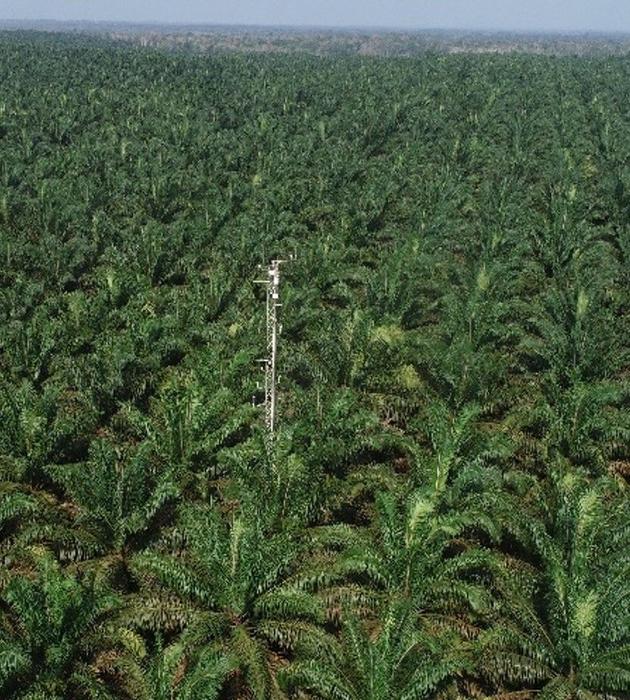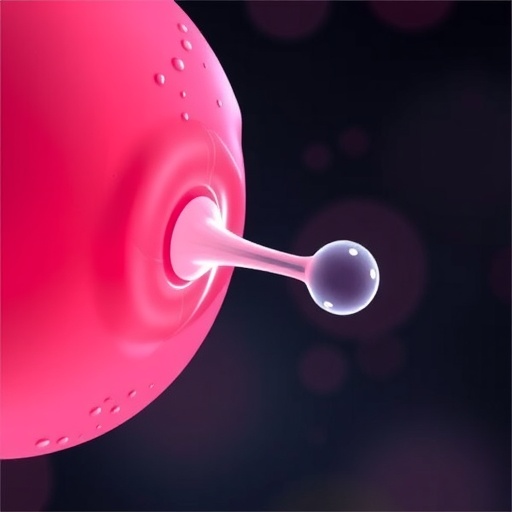The rapid spread of oil palm plantations and associated high use of fertilizer raises concerns about the emission of nitrous oxide (N2O), a powerful greenhouse gas. A new study by an international research team led by the University of Göttingen shows that oil palms’ photosynthesis and their response to meteorological and soil conditions play an important but still widely unexplored role in the amount of N2O produced by oil palm plantations. The results are important for strategies to reduce the negative impact of N2O emissions from oil palm cultivation by selecting appropriate locations and improving plantation management. The study was published in the journal Global Change Biology – Bioenergy.

Credit: Annaggadipa R. Jambi
The rapid spread of oil palm plantations and associated high use of fertilizer raises concerns about the emission of nitrous oxide (N2O), a powerful greenhouse gas. A new study by an international research team led by the University of Göttingen shows that oil palms’ photosynthesis and their response to meteorological and soil conditions play an important but still widely unexplored role in the amount of N2O produced by oil palm plantations. The results are important for strategies to reduce the negative impact of N2O emissions from oil palm cultivation by selecting appropriate locations and improving plantation management. The study was published in the journal Global Change Biology – Bioenergy.
During recent decades, rising global demand for cheap oils and fats has promoted the expansion of oil palm plantations in tropical regions. High yields of palm oil are typically achieved by a high use of fertilizer. However, high fertilizer levels or inappropriate timing of fertilizer application may cause environmental problems such as increased emissions of N2O. The scientists carried out their research in a mature plantation in Jambi, Indonesia, with the aim of quantifying N2O emissions in oil palm and assessing environmental and meteorological drivers of N2O emissions over different timescales.
“The timing and location of N2O emissions in oil palm plantations vary hugely, which means it is really difficult to estimate emissions. This has really hampered our understanding of cause-and-effect relationships,” says first author Dr Christian Stiegler from the Bioclimatology Group, University of Göttingen. “However, we found that variations in N2O emissions are strongly linked to oil palm metabolism and the oil palms’ response to meteorological and soil conditions. Over the course of the day, for instance, emissions were mainly related to oil palm photosynthesis. During the night, we could link the level of emissions to oil palm respiration and soil temperature. Over longer periods of time, meaning several days to several weeks, we found that changes in weather patterns, soil moisture and soil temperature directly impact oil palm photosynthesis, respiration and N2O production in the soil and therefore N2O emissions,” explains Stiegler. This multitude of drivers interacting over various time periods imposes high demands on how the effects could be measured. The study also shows that conventional measurement approaches that do not take into account how N2O is transported within individual oil palms risk underestimating N2O emissions from oil palm cultivation by 49%.
“The oil palm plantation that we studied is a strong local source of N2O, with up to 77% higher emissions compared to natural forest systems in Jambi province,” explains Professor Alexander Knohl, senior author and head of the Bioclimatology Group, University of Göttingen. “This research highlights how important it is to quantify N2O emissions in oil palm and to understand their dynamics and the controlling factors. This will allow farmers to develop optimal fertilizer management systems adapted to the age of the palms, nitrogen requirements of each plant, and local soil and climate condition for mitigating the negative impacts of oil palm cultivation by reducing N2O emissions.”
This research is part of the German-Indonesian Collaborative Research Centre “Ecological and Socioeconomic Functions of Tropical Lowland Rainforest Transformation Systems (EFForTS)”, funded by the German Research Foundation (DFG). Further information can be found here: www.uni-goettingen.de/efforts.
Original publication: Christian Stiegler et al. Temporal variation in nitrous oxide (N2O) fluxes from an oil palm plantation in Indonesia: an ecosystem-scale analysis. Global Change Biology – Bioenergy. DOI: 10.1111/gcbb.13088
Contact:
Dr. Christian Stiegler
University of Göttingen
Bioclimatology
Büsgenweg 2, 37077 Göttingen, Germany
Email: [email protected]
https://www.uni-goettingen.de/en/544871.html
Journal
GCB Bioenergy
DOI
10.1111/gcbb.13088
Method of Research
Experimental study
Subject of Research
Not applicable
Article Title
Temporal variation in nitrous oxide (N2O) fluxes from an oil palm plantation in Indonesia: an ecosystem-scale analysis
Article Publication Date
14-Jul-2023




